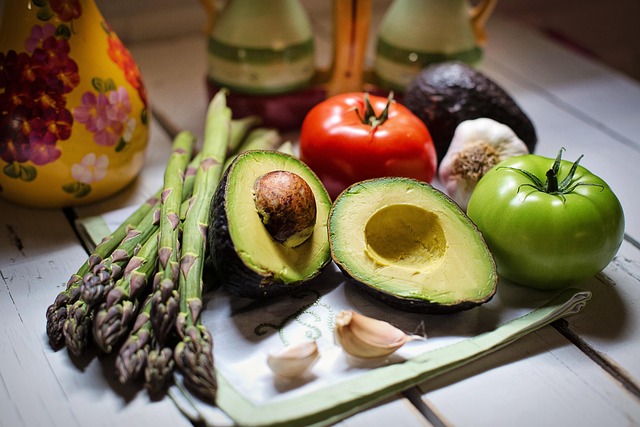The trend towards eco-friendly kitchen floors is driven by environmental consciousness and design aesthetics, with materials like reclaimed wood, bamboo, natural fibers, and recycled content gaining popularity. These options offer reduced carbon footprints, durability, insulation, and health benefits while merging sustainability with modern design trends in high-traffic areas like kitchens. Choosing these floors not only benefits the planet but also enhances home durability, indoor air quality, and kitchen uniqueness.
“Transform your space with unique flooring materials that blend style, durability, and environmental responsibility. In today’s market, eco-friendly options offer not just sustainability but also aesthetic appeal and practicality, especially in high-traffic areas like kitchens. This article explores the latest trends in eco-conscious flooring, focusing on kitchen applications. From durable bamboo to charming natural fiber rugs, we uncover versatile materials that cater to various tastes and budgets. Additionally, installation tips and maintenance guidelines ensure your investment stands the test of time.”
- Trends in Eco-Friendly Flooring Materials
- – Current popular choices for sustainable flooring
- – Benefits of eco-friendly floors in kitchens
- Eco-Friendly Options for Kitchen Floors
Trends in Eco-Friendly Flooring Materials
In recent years, there’s been a noticeable shift towards eco-friendly flooring materials, driven by both environmental consciousness and design aesthetics. One notable trend in eco-friendly kitchen floors is the increasing popularity of reclaimed wood. This sustainable option not only reduces waste but also adds character and warmth to spaces with its unique grain patterns and aging appeal. Additionally, materials like bamboo, known for its rapid growth rate, have become a preferred choice due to their durability and lower environmental impact compared to traditional hardwoods.
Another emerging trend is the integration of natural fibers such as jute, hemp, and sisal into flooring designs. These organic materials offer both insulation and texture, making them ideal for eco-conscious kitchens aiming for a cozy yet environmentally friendly ambiance. Furthermore, recycled content floors made from repurposed materials like plastic bottles or rubber tires are gaining traction, demonstrating that sustainability can seamlessly merge with modern design trends, especially in high-traffic areas like kitchens where durability and resilience are paramount.
– Current popular choices for sustainable flooring
In today’s world, where environmental consciousness is on the rise, sustainable flooring options have become a popular choice for those seeking to reduce their carbon footprint. Eco-friendly materials are no longer just a trend but a necessary step towards a greener future. One of the most in-demand options for eco-conscious homeowners, especially when it comes to the kitchen, is bamboo. Known for its rapid growth and durability, bamboo flooring offers a stylish and sustainable alternative to traditional wood. Its hard weariness makes it suitable for high-traffic areas like kitchens, providing a natural and elegant aesthetic.
Another popular choice among environmentally conscious consumers is recycled materials. Old vinyl, rubber, or even plastic bottles can be transformed into new flooring. These products are not only sustainable but also offer unique designs and colors that can add character to any space. Moreover, with the increasing demand for eco-friendly options, manufacturers are constantly innovating, making it easier to find high-quality, sustainable flooring that aligns with modern design trends, such as eco-friendly kitchen floors, without compromising on style or durability.
– Benefits of eco-friendly floors in kitchens
Choosing eco-friendly kitchen floors offers a range of benefits, both for your home and the planet. These materials are typically made from sustainable resources, reducing your environmental footprint. In kitchens, where moisture and durability are key considerations, modern eco-friendly options excel in these areas too. Many materials, such as bamboo or recycled plastic, have natural water resistance, preventing warping or damage caused by spills and humidity.
Moreover, eco-friendly kitchen floors contribute to a healthier living space. They often have lower volatile organic compound (VOC) emissions than traditional options, improving indoor air quality. This is particularly beneficial in kitchens, where you spend time preparing meals and breathing in the air. Such flooring also reduces noise transmission, creating a calmer environment while enhancing your home’s overall energy efficiency.
Eco-Friendly Options for Kitchen Floors
When it comes to choosing flooring for your kitchen, opting for eco-friendly materials is an increasingly popular and responsible decision. Kitchens are often high-traffic areas, and with the right sustainable options, you can reduce your environmental impact while creating a stylish space. Bamboo is a renowned eco-friendly material that offers durability and versatility. It’s a fast-growing grass, making it a renewable resource, and its natural hardness ensures it withstands kitchen wear and tear. Another option is recycled glass or stone tiles, which not only add a unique aesthetic but also provide excellent insulation and are easy to maintain. These materials are free from harmful chemicals often found in traditional flooring, ensuring a healthier cooking environment.
Additionally, natural linoleum is an excellent choice for those seeking a truly sustainable option. Made from renewable resources like linseed oil, cork dust, and wood flour, it offers exceptional durability and antibacterial properties. Linoleum is also highly customizable, allowing for unique designs and patterns to suit your kitchen’s aesthetic. These eco-friendly flooring solutions not only contribute to a greener planet but also add character and longevity to your kitchen space.
In conclusion, opting for eco-friendly kitchen floors not only aligns with current trends but also offers a host of benefits, from reduced environmental impact to enhanced durability. By choosing materials like bamboo, cork, or recycled tiles, you contribute to a sustainable future while enjoying the aesthetic appeal and practicality these options provide. Embrace nature’s beauty in your home and make a positive difference for the planet.
